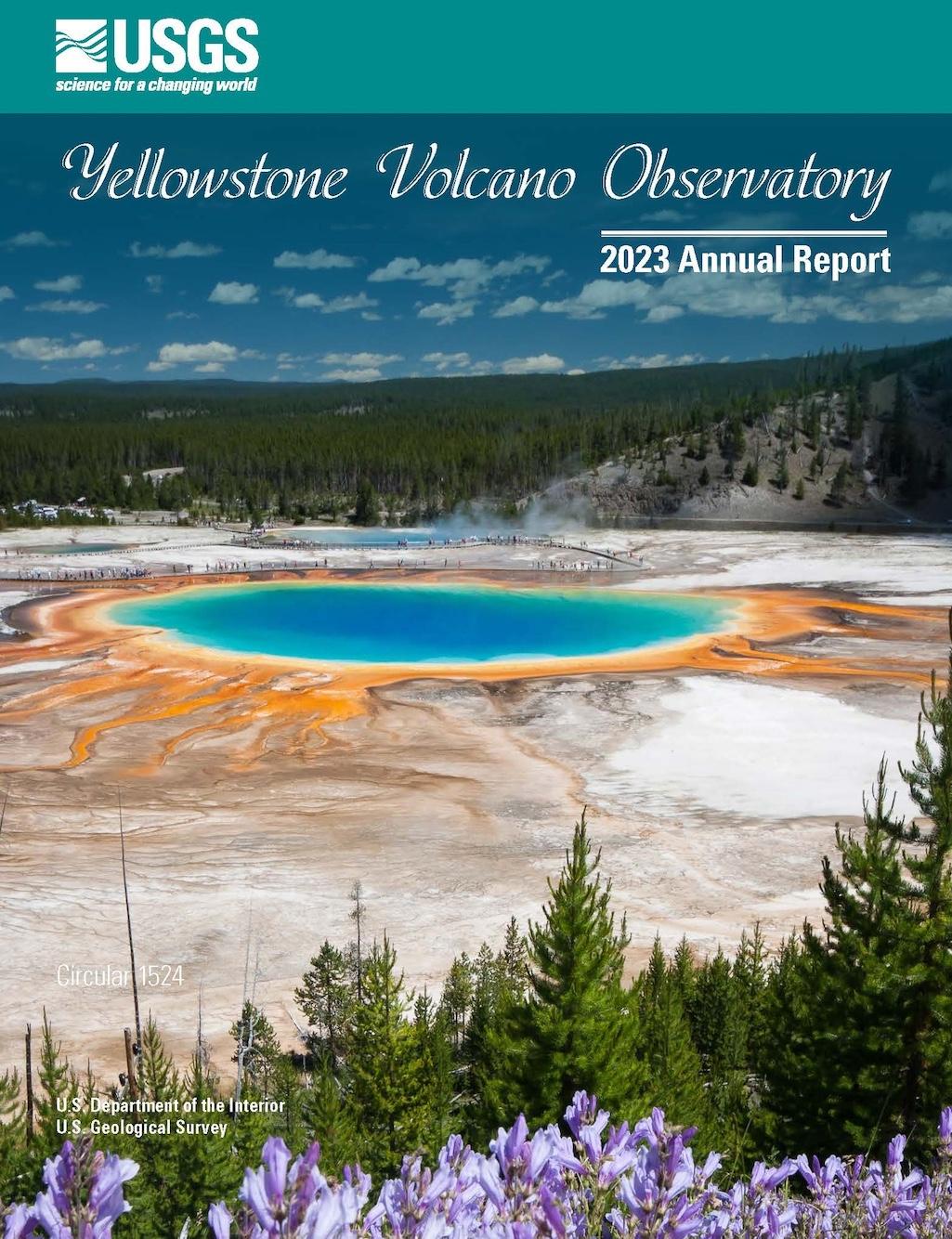
The Yellowstone Volcano Observatory's 2023 annual report is out.
Editor's note: Yellowstone Caldera Chronicles is a weekly column written by scientists and collaborators of the Yellowstone Volcano Observatory. This week's contribution is from Michael Poland, geophysicist with the U.S. Geological Survey and Scientist-in-Charge of the Yellowstone Volcano Observatory.
Every year since 2017, the Yellowstone Volcano Observatory has summarized yearly geological activity—earthquakes, ground deformation, geyser eruptions, and so forth—and research efforts and findings in a series of annual reports. In these products you can find information about the numbers of seismic swarms in a given year, or the progress made on geologic mapping and dating of Yellowstone deposits, and even the thermal emissions from Yellowstone National Park as detected by satellites.
The observatory has announced that the 2023 annual report has just been published and is now freely available online at https://pubs.usgs.gov/publication/cir1524. As is traditional, the summary highlights monitoring data collected over the course of the year. For instance, there were 1,623 earthquakes located in the region in 2023, the largest of which was M3.7. This number of earthquakes was down from the 2,429 that were located in 2022 and the 2,773 that occurred in 2021.
In 2023 there were 24 earthquake swarms, which are groupings of earthquakes that are clustered together in both space and time. The most significant swarm of the year occurred a few miles to the southeast of West Yellowstone, Montana, in mid-March and included 138 located events.
As has been the trend since 2015, Yellowstone Caldera subsided by 1–2 inches (2–3 centimeters) over the course of the year, interrupted during the summer months by a pause or minor amount of uplift due to seasonal changes in groundwater conditions and snowmelt. Little significant deformation has been detected in the area of Norris Geyser Basin since 2018.
Thermal emissions showed no significant changes compared to previous years. Park-wide estimates of heat output measured by thermal infrared satellite data indicated about 2.0 gigawatts of geothermal radiative power output, with Norris Geyser Basin ranking first among Yellowstone National Park’s geyser basins in terms of thermal emissions. The total amount of chloride measured in Yellowstone rivers—an indication of how much thermal water is emitted by geysers and hot springs—was also similar to that of previous years.
Geyser activity in Yellowstone National Park remained interesting and unpredictable in 2023. Steamboat Geyser erupted nine times during the year, which is the lowest number of annual eruptions since the current eruption cycle began in 2018. Giant Geyser, in Upper Geyser Basin, erupted for the first time since 2019. Also in the Upper Geyser Basin, a stretch of boardwalk on Geyser Hill between Sponge and Aurum Geysers was closed in late May 2023 due to the reactivation of older, and formation of new, thermal features, some of which splashed debris and hot water onto the boardwalk. This activity resembled that which occurred in the same area in 2018 and is an example of the dynamic nature of Yellowstone’s geyser systems. The activity declined in June and July, and the boardwalk was reopened in August.
To better monitor, and perhaps anticipate, changes in Yellowstone National Park’s hydrothermal system, YVO scientists installed the first monitoring site specifically intended to track geyser and hot spring activity. The station was installed in the Ragged Hills area of Norris Geyser Basin in September 2023 and includes a broadband seismometer, meteorological sensors, a continuous GPS instrument, and an infrasound array. Infrasound refers to low-frequency sound waves, inaudible to humans, that can indicate activity associated with geysers, volcanic eruptions, meteor impacts, nuclear explosions, and other natural and human-caused processes. The sensors have already paid dividends, characterizing multiple eruptions of Steamboat Geyser and detecting small earthquakes local to the Norris area.




 Support Essential Coverage of Essential Places
Support Essential Coverage of Essential Places






